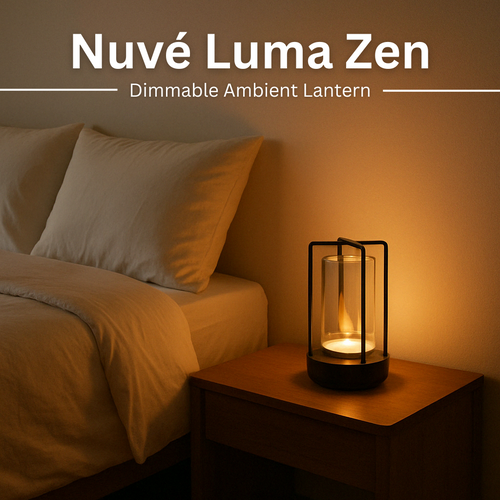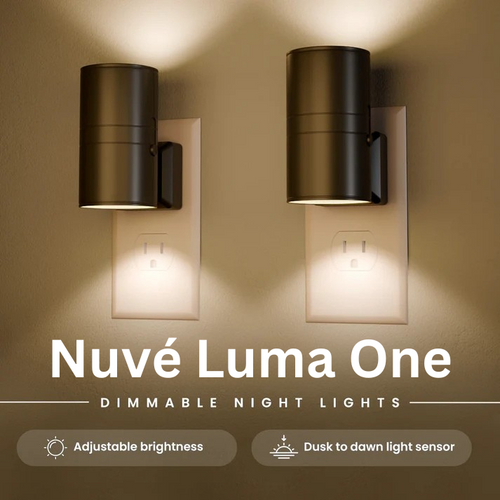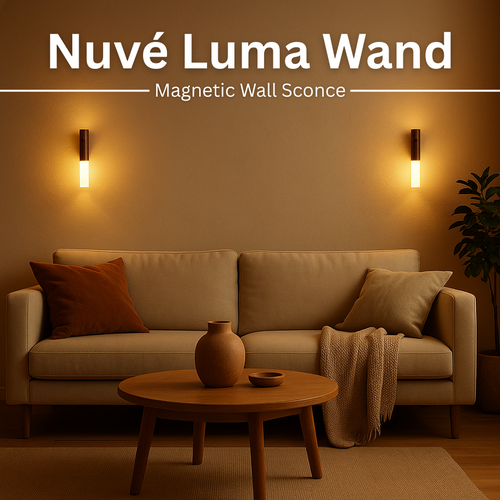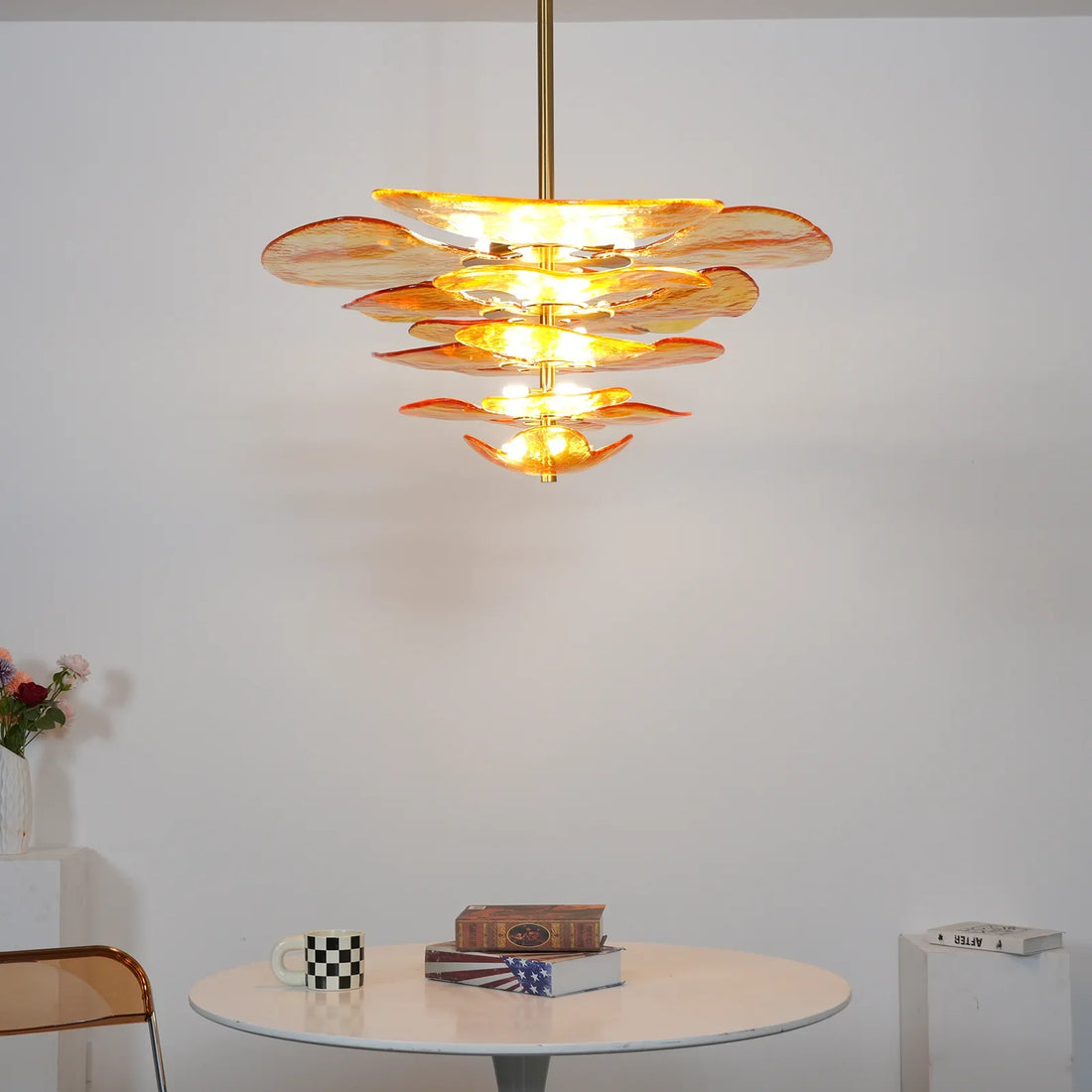Lighting is one of the most underestimated tools in interior design. It defines how a space feels, functions, and flows — and it directly influences our mood, focus, and comfort. Choosing the right light isn’t about wattage or style alone; it’s about balance, proportion, and the way light interacts with form and material.
At Nuvé Studio, we see lighting as the invisible architecture of a room. It gives structure to open space, warmth to texture, and rhythm to the everyday. Below, we share how to choose lighting for every room using simple design fundamentals and the science of comfort.
The Living Room: Layering for Atmosphere
A living room should feel adaptable — bright and social by day, soft and grounding by night. Start with a base layer of ambient light: diffused ceiling or wall fixtures that wash the room evenly.
Next, add focused task lighting for reading or conversation. A cordless Luma Wand on a side table or the Luma Axis along a wall can create zones of intimacy within larger rooms. The final layer, accent lighting, highlights art, shelves, or architectural detail.
Design tip: Interior designers use the “rule of three” — ambient, task, and accent lighting — to achieve visual rhythm and emotional balance. Avoid relying on a single overhead source, which flattens space and erases texture.
The Bedroom: Warmth and Rest
Bedroom lighting should guide the body toward rest. Warm, indirect light in the 2700K–3000K range mimics sunset and signals calm to the brain.
A pair of Luma One lamps beside the bed creates symmetry and soft illumination without glare. Wall-mounted sconces free up space and add structure. Dimmable, cordless options make evening routines effortless.
Design principle: In bedroom design, proportion matters as much as color. Keep lighting at eye level when seated or lying down to maintain visual harmony and avoid harsh downward shadows.
The Kitchen: Function Meets Focus
Kitchens need clarity and precision, but they shouldn’t feel sterile. Layer general lighting with task lighting above counters and islands.
Pendant lights like the Luma Beam can define the workspace while providing directional brightness. Under-cabinet lighting helps avoid shadows on surfaces and enhances the perception of cleanliness.
Design insight: According to interior design fundamentals, contrast ratios between lighted and shaded areas should stay within comfortable visual limits — typically 1:3 for workspaces — to prevent strain and maintain flow.
The Bathroom: Reflection and Realism
Bathrooms benefit from light that flatters skin tone and clarity. Combine side-mounted fixtures with diffuse overhead sources. Avoid placing a single light directly above the mirror, which casts downward shadows and distorts reflection.
Neutral light around 3500K gives the most natural results. Rechargeable wall lights or sconces like the Luma Wand can bring warmth to spaces that often feel clinical.
Design principle: Symmetry and balanced brightness are key. Humans read their own reflections more positively when light levels are even on both sides of the face.
The Dining Room: Connection and Focus
A dining table is both a gathering and a statement piece. The light above it should frame the moment, not dominate it. Hang pendant lighting 28–32 inches above the tabletop for ideal balance.
Soft, dimmable lighting encourages longer conversation and comfort. For flexible layouts, portable lights like the Luma Zen create atmosphere anywhere, from indoor dinners to open-air events.
Design insight: Psychologists have found that warm, low light increases perceived intimacy — a subtle but powerful design tool for spaces centered around connection.
The Entryway: First Impression of Light
An entry sets the emotional tone of a home. Keep the lighting gentle but purposeful — a mix of overhead illumination and accent lighting that highlights texture and shape.
Try a small cordless Luma One on a console or a slender wall fixture near the door to anchor the space. The goal is to create welcome without glare.
Design principle: Transitional spaces like entryways benefit from lighting gradients — soft fades between bright and dim zones — which signal psychological movement from public to private space.
Key Takeaways for Choosing Lighting
-
Think in layers — ambient, task, and accent light build rhythm and depth.
-
Match color temperature to activity and time of day.
-
Balance brightness ratios to maintain harmony and avoid fatigue.
-
Treat light as a design material — it defines shape, color, and texture.
-
Choose cordless, adaptable pieces to evolve with your lifestyle.
Lighting is more than utility. It’s how we feel time, space, and belonging. When light is designed with care, the entire home breathes differently.





